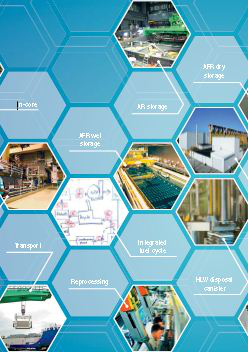Speaker
Mr
Arturas Smaizys
(Lithuanian Energy Institute)
Description
The present spent nuclear fuel management concept in the Lithuania foresees dry spent nuclear fuel storage in the casks for 50 years. During this time the final management concept shall be developed. Different options are under consideration, however due to various uncertainties in future, there is a risk that these options can be not implemented in due time, therefore elongation of the spent nuclear fuel storage for a period over 50 years shall be also considered.
Existing spent nuclear fuel storage facility at Ignalina Nuclear Power Plant site has been extended for several times and currently is filled up to its final capacity with 20 metal CASTOR® RBMK-1500 and 100 reinforced concrete CONSTOR® RBMK-1500 casks.
Modelling of radiation doses on the sidelong, upper and lower surface of theses dry storage casks and for certain distance during very long term storage has been performed using SCALE computer codes system. Obtained results showed that CONSTOR® RBMK-1500 cask has better shielding properties than CASTOR® RBMK-1500 cask. Material composition and thickness of the side walls and bottoms of these casks are different, therefore total equivalent dose rates at casks side-walls and bottoms differ from 2 to 7 times during storage periods up to 50 years. During very long term storage period (up to 300 years) the total dose rate is significantly decreasing, the difference of dose rates for different cask is increasing up to 60 times and after such period dose rate caused by neutrons is becoming dominant for the both casks.
Description of the calculation model, accepted assumptions and obtained modelling results are presented and discussed in the paper.
Country/ int. organization
Lithuanian Energy Institute
Nuclear Engineering Laboratory
Author
Mr
Arturas Smaizys
(Lithuanian Energy Institute)
Co-authors
Mr
Ernestas Narkunas
(Lithuanian Energy Institute)
Mr
Povilas Poskas
(Lithuanian Energy Institute)

